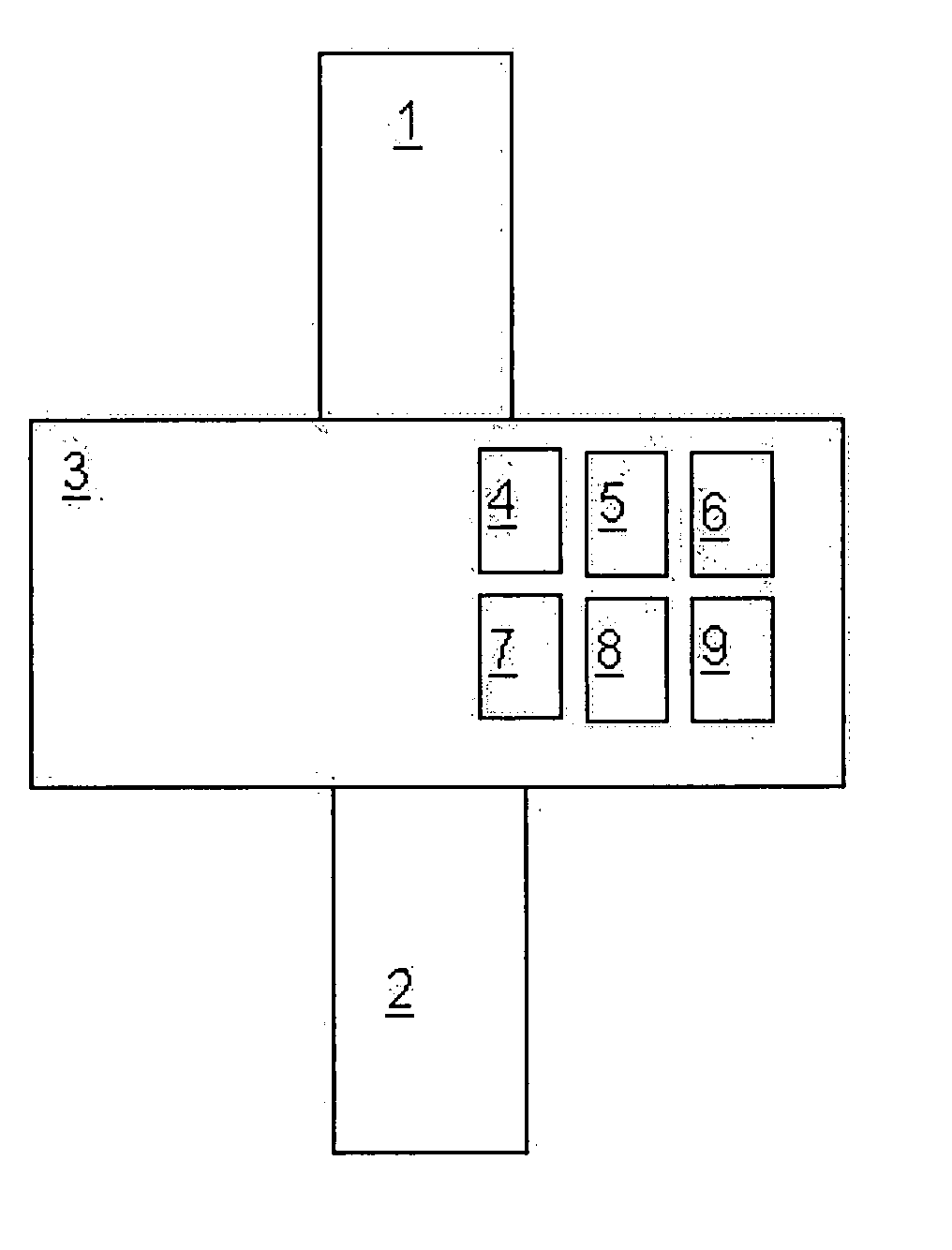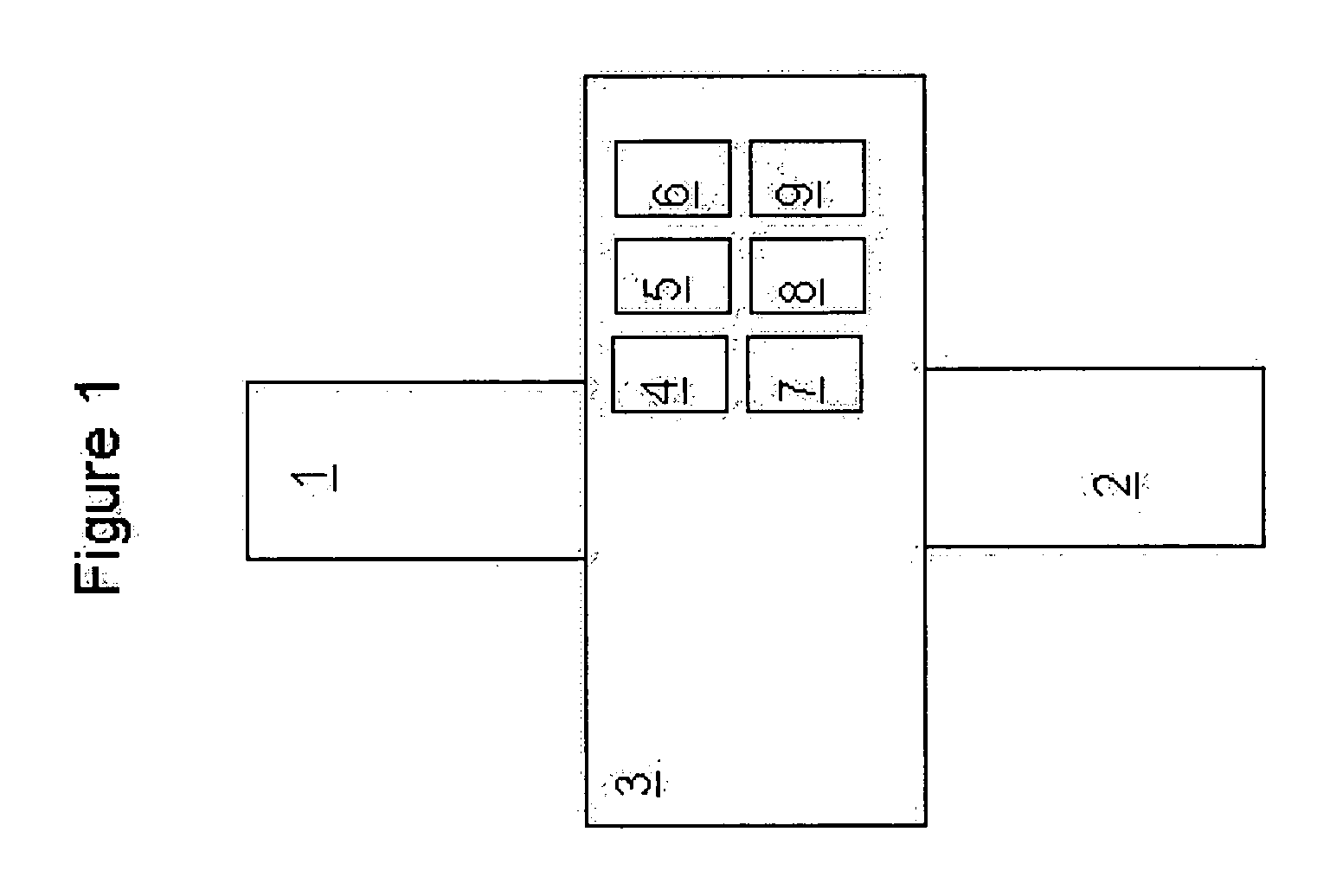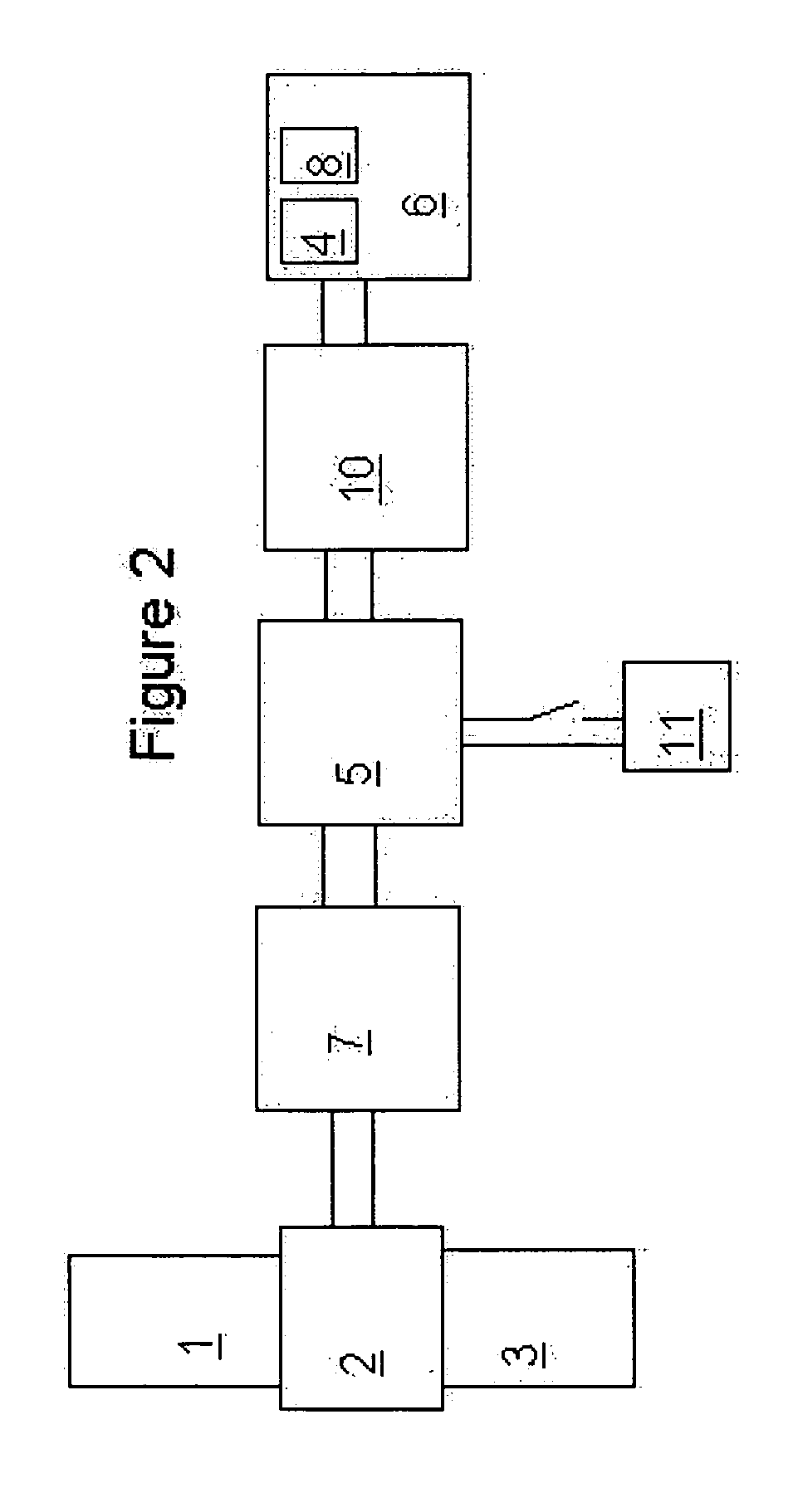Thermoelectric power source utilizing ambient energy harvesting for remote sensing and transmitting
a technology of ambient energy and power source, applied in the field of thermoelectric power source, can solve the problems of unanticipated capabilities and requirements, device that draws electrical energy from a chemical reaction, and the useful life of the device is limited by the duration,
- Summary
- Abstract
- Description
- Claims
- Application Information
AI Technical Summary
Benefits of technology
Problems solved by technology
Method used
Image
Examples
Embodiment Construction
[0016] A series of experiments were conducted to demonstrate the operation of a preferred embodiment of the present invention. The basic circuit configuration in these experiments is shown in FIG. 2. In this circuit, a commercial 40 mm×40 mm bismuth telluride thermoelectric element 2 supplied by MELCOR of Trenton, N.J. was attached to heat pipes 1, 3 supplied by Beckwith Electronics of Fenton, Mo. One of the heat pipes supplied thermal energy from the warmer ambient region to the 40 mm×40 mm hot shoe side of the device. The second heat pipe 3 conducted heat from the corresponding 40 mm×40 mm cold shoe located on the opposite side of the thermoelectric element and dissipated this heat in the colder ambient region. The balance of the circuit consisted of a voltage amplifier 7, a supercapacitor 5, a temperature sensor 4, a microprocessor 8 that managed data acquisition and storage, a voltage regulator 10 and a radio frequency transmitter 6. The voltage amplifier 7 transformed the typic...
PUM
 Login to View More
Login to View More Abstract
Description
Claims
Application Information
 Login to View More
Login to View More - R&D
- Intellectual Property
- Life Sciences
- Materials
- Tech Scout
- Unparalleled Data Quality
- Higher Quality Content
- 60% Fewer Hallucinations
Browse by: Latest US Patents, China's latest patents, Technical Efficacy Thesaurus, Application Domain, Technology Topic, Popular Technical Reports.
© 2025 PatSnap. All rights reserved.Legal|Privacy policy|Modern Slavery Act Transparency Statement|Sitemap|About US| Contact US: help@patsnap.com



